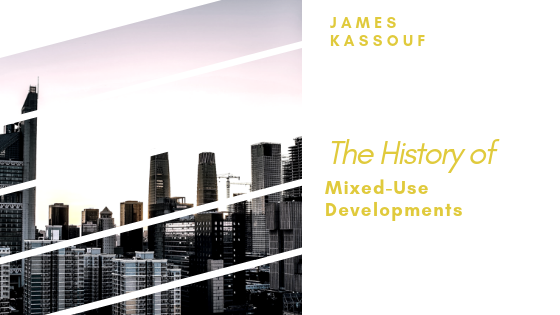A mixed-use development is a place that combines commercial and residential properties into one community. You’ll frequently see these advertised as “Live, Work, Play” communities. Although we are seeing this type of community more frequently today, it is not a new concept. In fact, mixed-use developments have been for thousands of years.
The first mixed-use developments were in caves. These developments were not as simple as you might think but instead quite complex. Research has found that caves were used for several purposes, all of which fall under the “Live, Work, Play” system.
Ancient Rome
The Romans also built complexes that had several uses. For example, Pompeii was a mixed-use city in Ancient Rome. Most people walked everywhere, which was feasible because everything was built close together. Basilicas, markets, and theaters were all close to homes. Entertainment was near work, which was near home. The city is believed to have been mostly self-sufficient, so these citizens may never have needed to leave their city.
Medieval Times
These “Live, Work, Play” communities were also common in the Middle Ages. Medieval villages were similar to our mixed-use developments of today. People worked and lived in the same area, usually within towering city walls. Many people would work and live in the same building. Having buildings close together kept the cities safer. It was harder to defend areas built out over wide open spaces.
Changing Times, Changing Land
It wasn’t until the early 1900s (the industrial revolution) that the idea of separating residential and commercial property became commonplace. Governments believed that separating the land for different uses would be beneficial in the wake of the booming American population. However, there were several negative effects of this setup.
Some of the downsides of the land being separated included longer travel, an increase in pollution, and higher energy consumption. Public service costs also rose along with many other costs.
Mixed-Use Developments Come Back
The separation lasted for decades, but in the 1970s mixed-use developments began to be built again. These new mixed-use developments were smaller than the ones of the past though. It wasn’t until the 1990s that we began to see larger mixed-use developments being built in many places again.
Today, our focus is on creating mixed-use developments that are sustainable. We recognize these communities make sense economically and make the best use of our land. Some people are still partial to living in residential areas and don’t like the idea of a community where businesses are also located. But people are beginning to see the many benefits of living in mixed-use developments, so they will likely be a large part of our future, as they have been a large part of the past.

